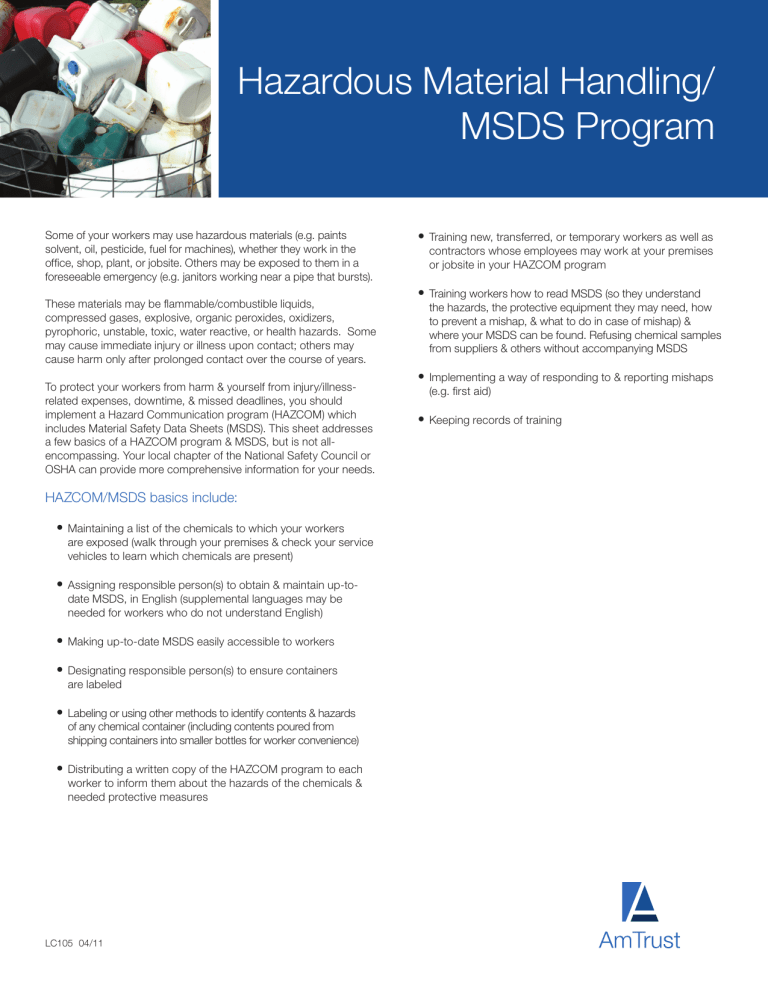Hazardous Material Handling/ MSDS Program

Hazardous Material Handling/
MSDS Program
Some of your workers may use hazardous materials (e.g. paints solvent, oil, pesticide, fuel for machines), whether they work in the office, shop, plant, or jobsite. Others may be exposed to them in a foreseeable emergency (e.g. janitors working near a pipe that bursts).
These materials may be flammable/combustible liquids, compressed gases, explosive, organic peroxides, oxidizers, pyrophoric, unstable, toxic, water reactive, or health hazards. Some may cause immediate injury or illness upon contact; others may cause harm only after prolonged contact over the course of years.
To protect your workers from harm & yourself from injury/illnessrelated expenses, downtime, & missed deadlines, you should implement a Hazard Communication program (HAZCOM) which includes Material Safety Data Sheets (MSDS). This sheet addresses a few basics of a HAZCOM program & MSDS, but is not allencompassing. Your local chapter of the National Safety Council or
OSHA can provide more comprehensive information for your needs.
HAZCOM/MSDS basics include:
• Maintaining a list of the chemicals to which your workers
are exposed (walk through your premises & check your service
vehicles to learn which chemicals are present)
• Assigning responsible person(s) to obtain & maintain up-to-
date MSDS, in English (supplemental languages may be
needed for workers who do not understand English)
• Making up-to-date MSDS easily accessible to workers
• Designating responsible person(s) to ensure containers are labeled
• Labeling or using other methods to identify contents & hazards of any chemical container (including contents poured from shipping containers into smaller bottles for worker convenience)
• Distributing a written copy of the HAZCOM program to each
worker to inform them about the hazards of the chemicals &
needed protective measures
• Training new, transferred, or temporary workers as well as
contractors whose employees may work at your premises
or jobsite in your HAZCOM program
• Training workers how to read MSDS (so they understand the hazards, the protective equipment they may need, how to prevent a mishap, & what to do in case of mishap) & where your MSDS can be found. Refusing chemical samples from suppliers & others without accompanying MSDS
• Implementing a way of responding to & reporting mishaps
(e.g. first aid)
• Keeping records of training
LC105 04/11


